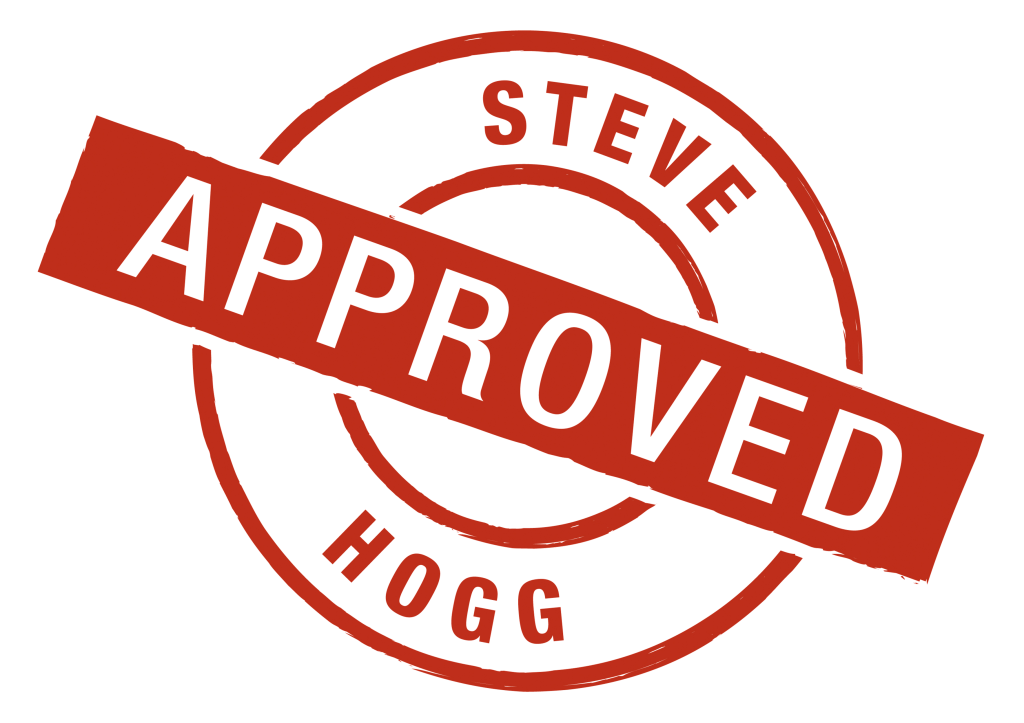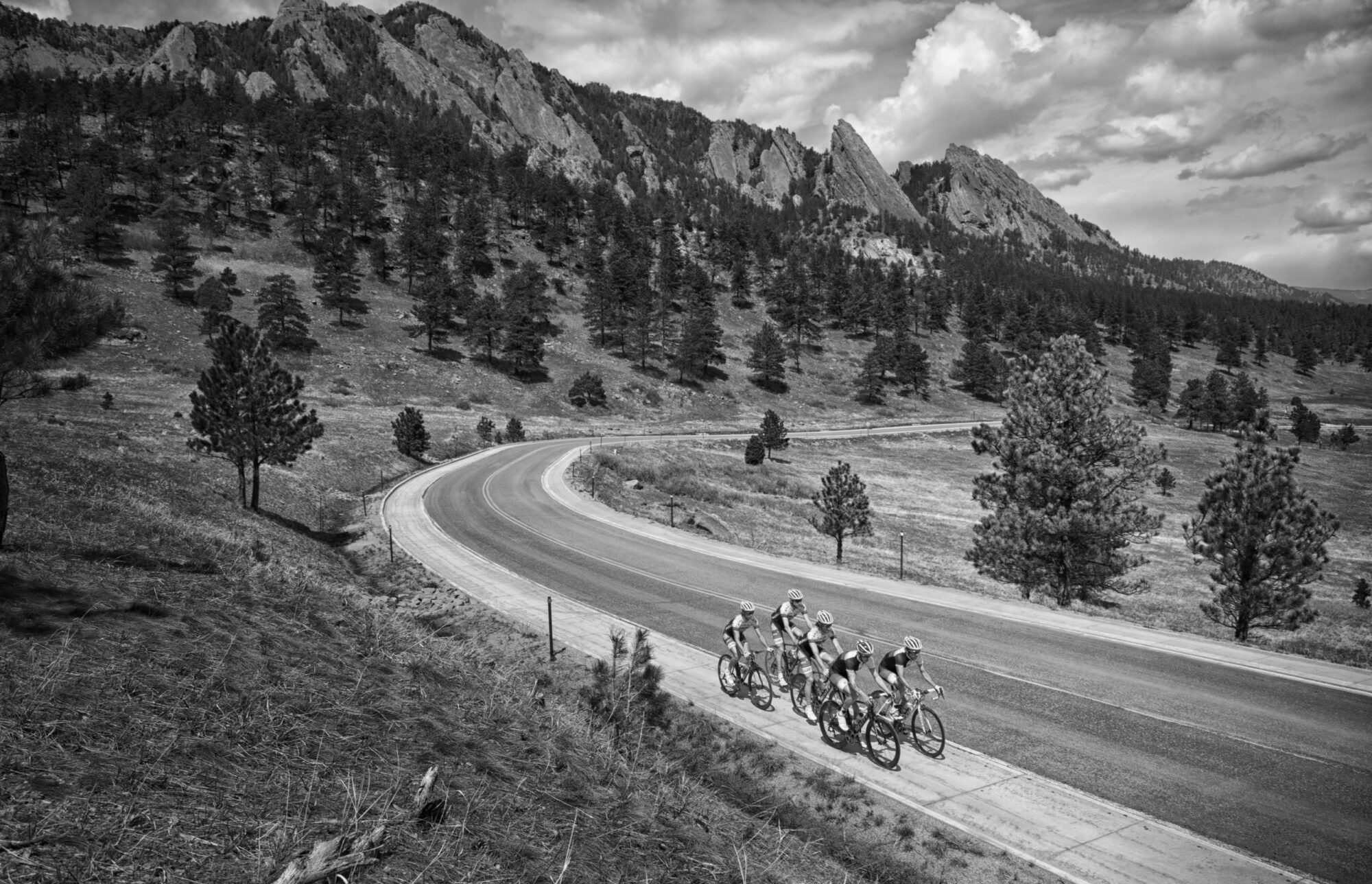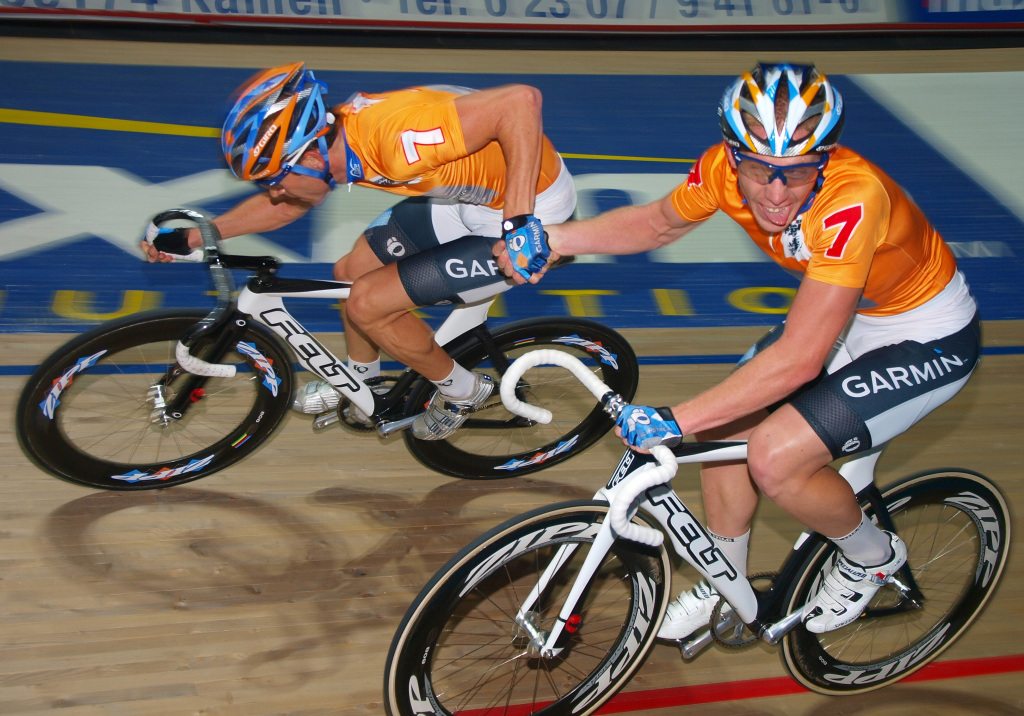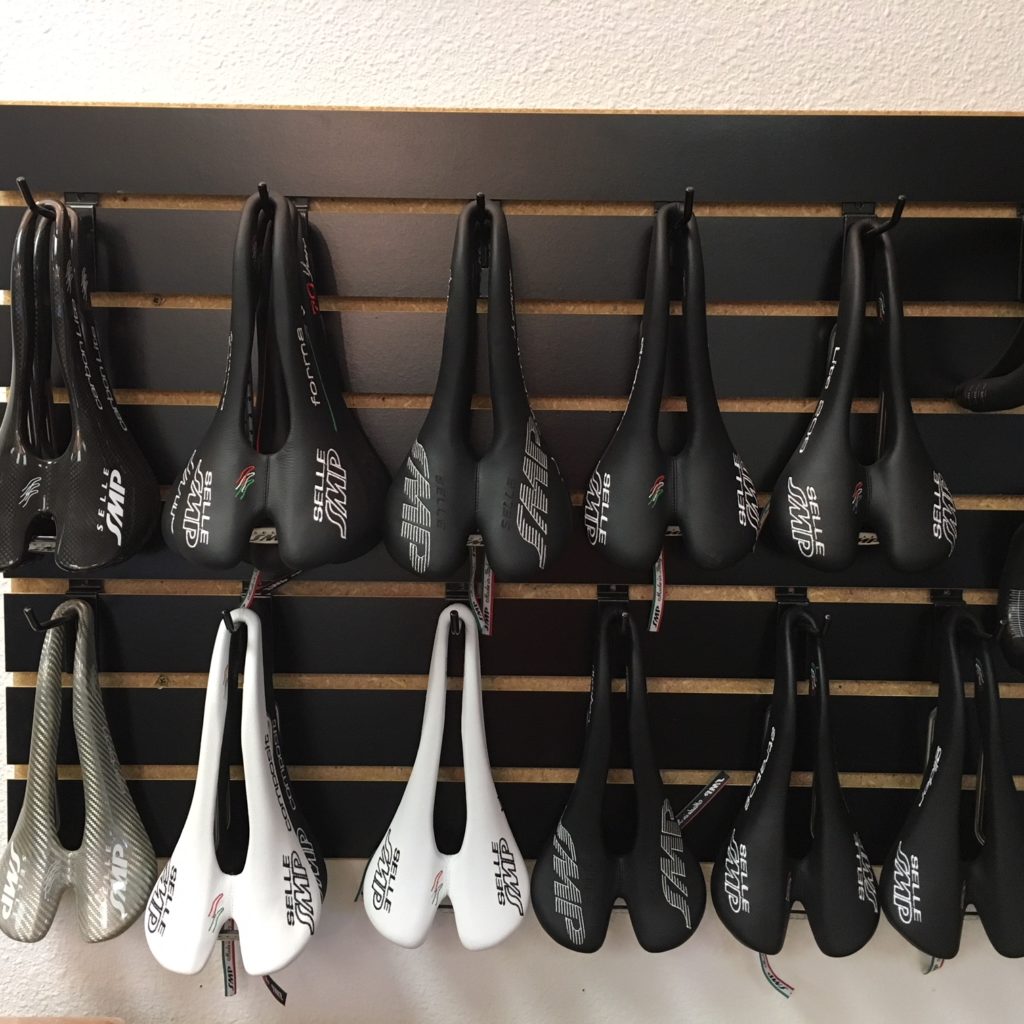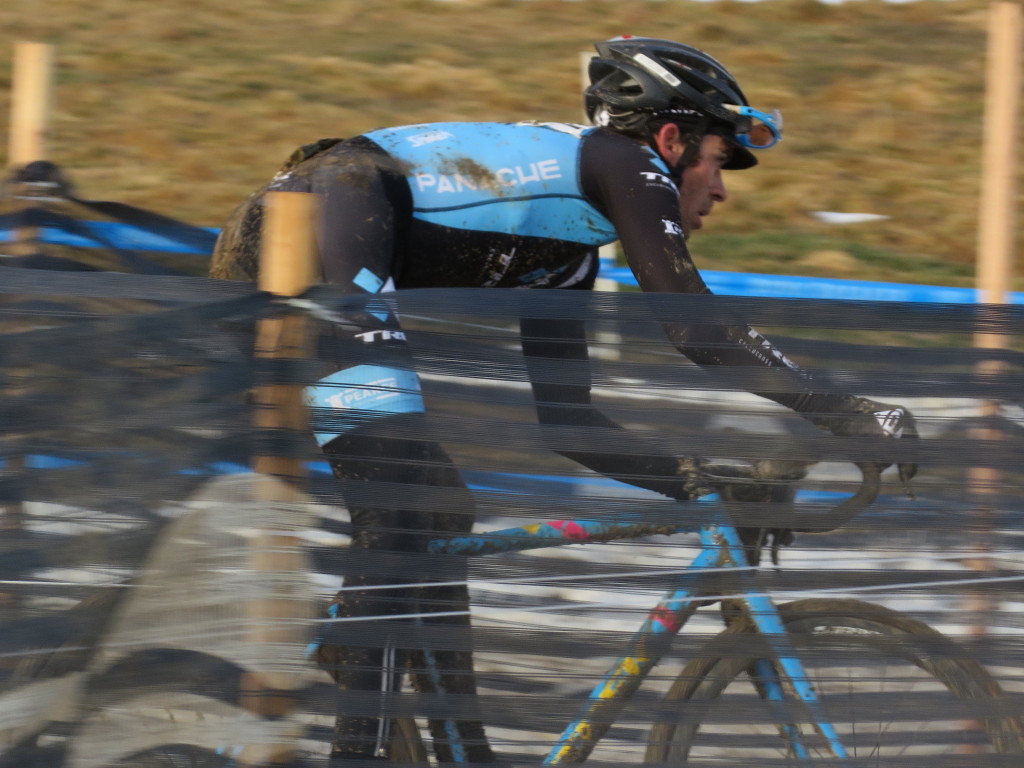
Positional Adjustments for a Gravel or Cyclocross Bicycle
By Colby Pearce
Riders frequently ask me if there is a correlation between the fit of a road bike and a gravel. The process is not formulaic or necessarily simple, however there are some basic guidelines that can be useful in setting up a gravel bike using the road bike as a starting point.
While there are potentially some differences between setting up a gravel and cyclocross bike, for most purposes this text can be applied to either scenario.
The recommendations made below are assuming your road bike fit is dialed in. From my perspective, this means:
- proper saddle setback, which puts as much weight as possible on the saddle given the mass distribution of the rider, the limb length, limitations lower back and hamstring mobility, flexibility and ability to generate symmetrical force while in a position of acute hip flexion. It also accounts or the anthropometrics of the rider. This means the athlete has to be able to hinge at the hip effectively.
- proper bar height and extension which is set according to the mass distribution of the rider, the limb and torso length, limitations lower back and hamstring mobility, flexibility and ability to generate symmetrical force while in a position of acute hip flexion, and is set within context of the demands of the event the bike is being fit for. Bar height and extension impact rider CdA as well as handling of the bike over different terrain [hills, descents, smooth surface, loose sand, water, etc].
- proper saddle height set within the parameters of knee and ankle extension, pelvic stability, pedaling technique and setback.
- proper arch support, foot correction and cleat position.
- proper posture of the athlete on the bike, under load and fatigue, which requires good proprioceptive awareness as well as proper strength and conditioning of the deep core [the inner unit].
All bicycles can be placed on a spectrum in regards to their intended purpose. On one end of this spectrum, we have time trial bicycles, especially those used in most US or UK races which tend to be straightforward out and back events that typically lack hills or corners other than a single “U” turn. When setting up a rider’s position on a TT bike, very little concern is given to how the rider’s weight distribution impacts handling, because the events do not have many changes in direction or varying terrain, and in many instances it is assumed that the aerodynamics of the event are the dominant predictor of outcome, even at the expense of handling.
On the other end of this spectrum, we find downhill mountain bikes. The riders make huge accommodations to their positions in order to ensure the bike handles properly for the demands of the event, even at the expense of a rider’s power production, and certainly without regard to aerodynamics [although the sport went through a brief phase of rubberized skin suits and disc wheels]. The saddles are set at ridiculously low heights (or dropper seat posts are used) to allow maximum adjustment of the rider’s center of gravity over steep terrain, stems are incredibly short to maximize rider leverage on the bars when riding over rocks and drops, bars are super wide to provide the widest possible hand stance, and cranks are short for ground clearance. Most riders probably cannot approach their true FTP or MLSS on this type of bike, but a downhill race does not demand that they do so. The demands of this discipline require that handling over rough, steep, rocky terrain is more important than power production. A fast downhiller constantly changes the relationship between his or her center of gravity and the BB and wheel axles of the bicycle in all planes of motion [transverse, sagittal and frontal] and in order to accomplish this, the cockpit must be “compressed”. If the distance between the bars and saddle is too long, it will limit the ability of the rider to manipulate the center of gravity in order to maintain tread contact with the trail at key moments, or to maneuver their center of gravity relative to the bottom bracket in order to enhance traction by manipulating weight over the suspended wheels of the bicycle.
Gravel riding represents an area of middle ground between the above examples of time trial and downhill MTB, and thus the bicycle is set up to allow a rider to make adjustments of the center of gravity relative to the wheelbase and bottom bracket, but not on the scale of a downhill bike. Aerodynamics are generally not a consideration for gravel bicycle fit, as the average speed of competitions are not high enough for the coefficient of drag to be a significant factor in the outcome of the race in most instances. There may be exceptions at the pointy end of an elite competition, and aerodynamics always needs to be a consideration in any bicycle set up to some degree [even if it is very small] but largely in gravel is it not a factor. That said, in ultra endurance events when riders find themselves isolated or in small groups for long periods of time, aero bars may be advantageous.
On that point, I rarely take the stance of a traditionalist or someone who values nostalgia for the sake of nostalgia, but I do believe that aero bars don’t belong on a gravel bike. This is equivalent to mixing sushi and Mexican food; there are some flavors that just don’t go together, nor should the attempt be made.
Gravel riding and racing requires some fundamentally different skills than road riding. In order for a rider to negotiate off road terrain at varying speeds, he or she must be able to shift their weight using the dimensions of the bicycle cockpit. Off road cycling requires dynamic weight placement on the bike to a much higher degree than road cycling. Changing weight emphasis, or moving the rider’s center of gravity, during off camber, uphill, downhill, grassy, rocky, sandy or other challenging conditions is essential to riding fast and staying upright. A rider whose bike is set up too stretched out, with the bars too low, or slammed too far back will not be able to perform these tasks effectively. Rider weight is shifted between all points of contact (front, middle or rear of the saddle, tops, hoods and drops on L and R sides respectively, and L or R pedals) to influence the contact patches of tire tread and drive the tread into the ground. This is how a rider negotiates the varying surfaces of a gravel or cyclocross course and stays upright.
Road riders are more habituated to keeping their center of gravity directly over the bottom bracket when cornering. That is, when viewed from the front, the riders center of gravity will lean at the same angle to the horizon as the bike is leaning. As the bike leans, the rider leans, and as the bike uprights, the bike uprights.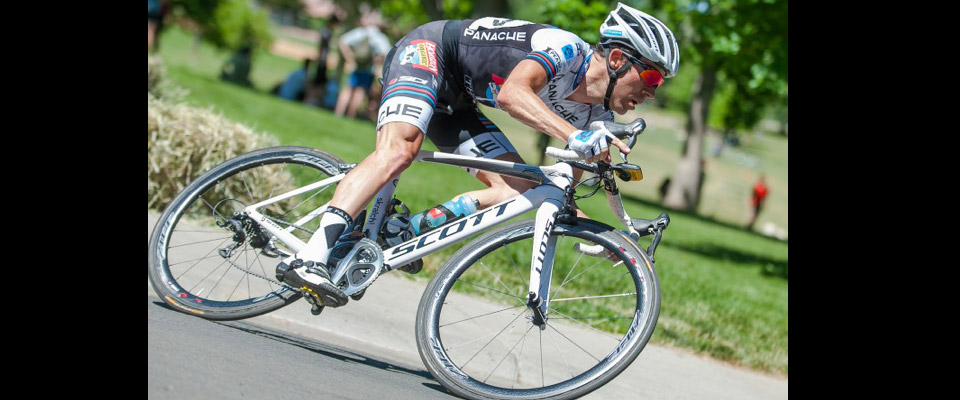
In order to increase leverage on the tread of a tire, the rider must decouple the center of gravity from the lean angle of the bike. This means leaning the bike more than that of the body.
Practical Application
Common gravel bike dimensional differences, relative to a road position, are listed below (in no particular order). These recommendations are based on the premise that the road position is reasonably aggressive, meaning that the road position is set up with some consideration to aerodynamics and that the rider has the functional ability to apply power smoothly in a position with a relatively large saddle offset, low bars, and long reach. If the rider’s road position is not very aggressive due to reduced anatomical function or biomechanics limitations [beer gut, long tibias, history of injury that prevents or inhibits effective hip hinge] the positional differences between a road and gravel bike will be less or possibly none.
- Stem length: typically shorter by 1-3 cm. This facilitates the ability to move over the bars when the rider needs more weight on the front wheel. This is crucial for the entrance to corners that require increased weight on the front axle. A shorter stem also reduces the length of the lever on the steering column, which creates a shorter radius to turn the wheel the same amount (in terms of angle relative to the top tube) in comparison to a longer stem (given the same bar width). During gravel and cyclocross races, more steering is required due to the low speed turns encountered on the course. By steering, we mean actual turning of the bars; on a road bike most cornering is accomplished with less steering and more leaning of the bike.
- Bar height: The handlebars can be 1-3cm higher. Due to the lower average speeds of gravel and cyclocross races, aerodynamics are not a significant consideration in the parameters of the fit, and raising the bars allows for more variation in how the rider carries his or her weight on the front end of the bike. That said, in my opinion many gravel, cyclocross and mountain bikes are set up with bars higher than they would be optimally placed. The concern many athletes frequently have about setting up bars low on a cyclocross or mountain bike is going over the bars on a steep descent. In most cases, this is pilot error as the butt must be far enough back behind the BB to not let the weight launch forward over the front axle when negotiating steep descents, or it is a tired sloppy rider who has lost core control. The most stable position with superior front wheel control is in the drops (as opposed to the hoods) and the drops should be used on steep descents. Additionally, a lower bar increases front wheel weight bias, which is generally desirable when setting up a gravel or cyclocross bike. I talk more about this below. Note that “1-3cm lower” is relative to the saddle, IE saddle to bar drop, not measured from the ground or front hub. Because gravel and cross bikes have forks with longer axle to crown dimensions, as well as differing bottom bracket heights than road bikes, any X-Y measurement you make of points on a road bike from the ground are useless when applying them to a gravel or cyclocross bike.
- Drop angle: frequently I notice cross riders who neglect or ignore their drops completely, always choosing the tops or hoods for all conditions. In most cases, the drop angle of their bars is also incorrect. Typically, the rider finds the hood angle is too low over bumpy terrain and rotates the entire handlebar to move the hoods higher (instead of unwrapping the bar to the hoods and moving the hoods alone), compromising the drop angle in the process. When the drop angle is set correctly to maintain a neutral wrist, and the proper hood angle is preserved to do the same, the rider typically resumes use of both positions at the appropriate point on the course. When the wrist angle is neutral, it is much easier for the rider to apply effective cornering force to the front wheel tread by driving the inside bar down towards the ground.
- Handlebars: typically one size (~2cm) wider. This allows for increased leverage during out of the saddle efforts in a high torque, low RPM situation (such as up a steep climb). Longer bars also allow for more leverage when pulling on the hoods or drops during seated, maximal efforts. The biggest argument for a narrow handlebar is aerodynamics, which does not apply to most events or rides in cross, so the benefits of a wider bar can be utilized without compromise.
- Pedal stance: is typically the same or wider. Most cranksets used on CX bikes are the same as road cranks (with possibly different chainrings) but depending on the road bike and type of pedals used, a rider’s cyclocross bike may have a wider pedal separation distance. This may be desirable or not, depending on the rider. If the rider requires a very narrow stance, MTB pedals may not provide optimal cleat placement. Most MTB pedals have longer axles than road pedals, and most MTB cleats have less lateral adjustment than road pedals, thus a rider’s feet may be much father from the centerline of the bike than optimal. Keep in mind that pedal separation distance also effects the handling of your bicycle; the wider the stance, the easier it is to “steer” the bicycle over bumpy or loose terrain by weighting your feet. A narrower stance makes it more challenging to do this. Downhill riders prefer cranks with wider pedal separation distance to maximize the ability to stabilize the bike by planting the feet.
- Saddle setback: is typically 1-4cm less than on a road bike. Again, this is to allow the rider opportunity to shift his or her weight in order to accommodate the greater variety of terrain encountered in a CX race relative to most road races. In road riding, the weight bias between front and rear axle must be very close. During a high speed sweeping corner on asphalt, if either wheel slides out it is usually a big problem. In contrast, during medium speed cornering over uneven terrain, the front wheel is more critical than the rear. If the rear wheel breaks loose, a good handler usually has no problem with a minor slide. However, if the front brakes loose, the rider must be very skilled to avoid going down. Thus, in off road terrain the weight bias changes to emphasize the front wheel. As we push the saddle further forward, we increase weight on the front axle (all other variables equal). This comes at the potential compromise of posterior chain muscle recruitment and support of the torso by the saddle. As the saddle comes forward, there is usually more reliance on quads to drive the pedals and more postural muscles will be recruited to support the weight of the thorax.
- Crankarms: are typically the same length as used on a road bike, or sometimes shorter. Because of the punchy, acceleratory nature of cyclocross races, shorter cranks are desirable. A longer crank will give better acceleration in a big gear from a dead stop, but will prove limiting when accelerating from moderate or high speed to very high speed, when quick leg turn over and high force are simultaneously needed. If you are riding cranks which are considered “normal” for your road bike size, inseam length, foot length, type of racing and movement function, then there is a good chance you will use the same size on a gravel or cross bike. If you are pushing the envelope on your road bike, consider sizing down by 2.5mm. Note that for the vast majority of all cyclists, going to shorter cranks has very little potential negatives, but riding cranks that are too long or even slightly too long is likely to have negative downstream consequences. If you don’t know what length cranks you should be on, start by reading this article: http://www.stevehoggbikefitting.com/blog/2011/06/crank-length-which-one/
- Saddle height: will be the same or possibly slightly lower [by a few mm]. A lower saddle accommodates weight shifts towards the front and rear of the saddle more readily, without putting a rider extremely far out of their optimal range of leg extension. Because of the high torque/ low cadence nature of gravel and cyclocross, these events tend to bring out any challenges a rider has towards pedaling smoothly, in particular when fatigued or after hours of riding bumpy or loose terrain.
- Saddle choice: ideally, identical saddles are used on all bikes. This simplifies the variables of saddle padding thickness and density, base height from the rails, base shape and flex.
- Bar width: normally I recommend one or two sizes wider bars than used on the road. The only reasons to use narrow bars are [ostensibly] for aerodynamics, which are not a big concern as noted above, or maneuvering in a peloton more easily [frequently not a factor in grave races, although there are moments]. The trade off is better leverage on the front wheel while cornering over loose, bumpy or unstable terrain.
Keep in mind that you typically cannot directly measure the difference between road and gravel saddle heights, because normally you are dealing with different shoes, pedals and cleats [which means a different stack height], pedal separation distance, and sometimes saddles. The best method to solve this problem:
- set up the gravel or cross bike to the same measured saddle height as the road bike; using an identical saddle
- on a day when a ride that is moderate in intensity and duration is chosen, upon returning to the bike den, immediately change shoes and head out for a few laps around the block on the gravel or cross bike.
- note any sensations that are different regarding saddle height.
Back to back comparison is always the best method, it is usually quite obvious when there are significant differences in saddle height using this method.
A note on cyclocross shoes: some riders select shoes that have less rigid soles for the running portions of the course. In my opinion, this is not necessary. The time spent running during a cyclocross race is minimal in terms of the total length of effort on the majority of courses, it is rarely a selective element in and of itself, and most cyclists run like ducks anyway. For those who come from a running background or have good running technique, the runs in most cyclocross races are chaotic affairs and typically take place on muddy inclines or wooden stairs, so there is not much technique involved other than doing it as fast as possible without taking yourself out.
Also, be advised that your off road pedals and shoes may not provide the same stable platform as your road pedals and shoes. A major pitfall of most off road pedal systems is that the lateral stability of the shoe is dependent on the contact of the shoe lugs with the pedal. In some cases, lugs on certain shoes are not standard height, causing the foot to “rock” or the opposite, making it difficult or impossible to engage the pedal. Additionally, when you go running around all over the place in your off road cycling shoes, you wear down the lug height, which decreases the stability of the interface with the pedal over time. This can in some instances lead to knee pain or other problems for certain riders. To evaluate how effective your pedal and shoe combination are working, clip your shoe into the pedal and remove your foot from the shoe. Then rock the shoe back and forth [tipping it from side to side, not by moving the heel L to R but by rotating the pedal around an imaginary axis running from heel to big toe] and look at the lug/ pedal contact. If there is more than 1mm gap on either side, you are riding on an unstable platform, and this should be remedied.
Weight Balance
Setting up the proper weight balance on a gravel or cyclocross bike is necessary to maximize cornering ability on bumpy or slick terrain. This process can involve some trial and error, but it is relatively straightforward overall. The essence of cornering is that an increase in weight must be placed on the front wheel during the corner entrance. Exiting the corner, weight must be placed on the rear wheel to avoid fishtailing and allow tread engagement for acceleration. This does not mean 100% of a rider’s weight goes from front to rear during a corner; rather a subtle shift occurs during the cornering without abrupt transition.
If the bike is set up with too much saddle setback, the bars too high, or a stem that is too short, the rider will have a tendency to wash out the front wheel in corner entrances, and will have a tendency to brake more than necessary for corners as compensation. This is because too much weight is focused on the rear of the bike.
Also note that an inherent front wheel bias exists in all off road handling conditions. On a road bike, in a fast sweeping downhill corner, if either the front or rear wheel breaks free, the rider will usually go down. In low or medium cornering speeds in loose off road terrain, a good handler will be fine with minor rear wheel slide, but the front wheel slide is a significant challenge for most. This is one reason why the first wheel to be suspended on a mountain bike is the front. Front wheel tire contact is more important than rear in off road riding, and so weight balance will be more front wheel biased for off road cornering than road for any given rider when bikes are set up to optimize handling.
Conversely, if a bike is set up with too little saddle setback, a stem which is too long, or bars which are too low (or some combination thereof) a rider will have too much weight on the front wheel and will have a tendency to slide out the rear wheel, frequently after the apex of a corner. As a general rule, if you dump it on your gravel bike, you should try to make note of which tire slid out and in what part of the corner, and after 3 crashes of the same nature, a change should be make to position, technique, or both. When making changes in saddle setback, bar height or reach, do it in 5-10 mm increments and change only one parameter at a time. After a few rides, you will have an idea if the variable changed was effective, or whether additional modification is needed.
Ride consciously,
Colby Pearce
